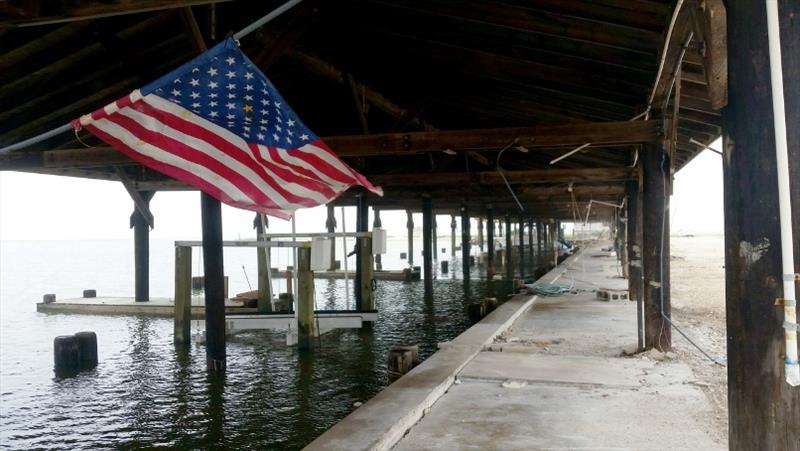
NOAA releases economic impact evaluations for Hurricanes Irma and Maria disasters
by NOAA Fisheries 2 Sep 2018 14:27 UTC

Damaged docks after a hurricane © NOAA Fisheries
The 2017 hurricane season was one of the costliest on record and caused significant damage to several U.S. states and territories. Hurricanes Irma and Maria were two major hurricanes that caused significant damage to Florida, Puerto Rico and the U.S. Virgin Islands.
To help assess economic impacts to these fishing communities, NOAA conducted assessments in conjunction with its state partners.
Today, NOAA released these 60-day regional evaluations of impacts from Hurricanes Irma and Maria to the fishing communities in Florida, Puerto Rico and the U.S. Virgin Islands. These regional impact evaluations provide information specific to the fishing industry to assist the Governors in assessing the damage caused by these storms and supplement ongoing work the states and territories are doing to assess similar damages.
U.S. commercial and recreational fisheries have a broad, positive economic impact on the U.S. economy. NOAA Fisheries will continue to play an active role in determining the impacts following Hurricanes Irma and Maria on the commercial and recreational fishing industries.
Assessment Highlights
Information collected on damages to fishing operations and fishing-related businesses for Florida, Puerto Rico and USVI indicate total damages of $117 million and revenue losses of $106 million.
Recreational Fishing Industry Impact
Typical damages to the recreational sector included revenue losses and structural damages to marinas and docks, spoiled bait, ruined tackle, and damages to for-hire vessels.
Commercial Fishing Industry Impact
Typical damages to the commercial fishing sector included revenues losses and structural damages to processor and dealer facilities, loss of product, damages to commercial fishing vessels, and lost gear.
Florida
- The impact to Florida has damage estimates ranging from $58 to $83 billion, with total damages to vessel owners and businesses estimated to exceed $95 million and revenue losses of nearly $98 million. It's estimated that 1677 jobs were lost in the short term.
- In Florida, commercial fishing vessels accounted for 45% of damages and 54% of lost revenue.
Puerto Rico
- The impact to Puerto Rico is estimated at $15.4 million in damages to fishing operations and businesses and revenue losses of $5.1 million. It's estimated that 174 jobs were lost in the short term.
- In Puerto Rico, commercial fishing vessels accounted for 35% of damages and 60% of lost revenue.
U.S. Virgin Islands
- The impact to USVI fishing operations and businesses is $6.1 million and revenue losses of $3.2 million.[1] It's estimated that 46 jobs were lost in the short term.
- In the USVI, commercial fishing vessels accounted for 76% of damages and 36% of lost revenue.
Economic Importance of fishing to these coastal communities:
- In 2015, the total annual value added of the commercial seafood industry in Florida is an estimated $5.9 billion (including imports) and domestic production alone accounts for 11,083 jobs and $450 million annually in value added. The recreational sector represents an even more important economic contribution with a value added economic impact estimated at $7.0 billion annually and accounting for some 96,000 direct and indirect jobs.
- Between 2010 and 2015, fishermen in Puerto Rico landed, on average, about 2.4 million pounds of finfish and shellfish with dockside revenues of $8.6 million per year.
- Between 2010 and 2015, fishermen in USVI landed, on average, about 884,000 pounds of finfish and shellfish with dockside revenue of $5.4 million per year.
[1]
Note that this is a lower bound estimate because it was not possible to expand the fishing business responses to the industry level because the number of firms in each sector was unknown.